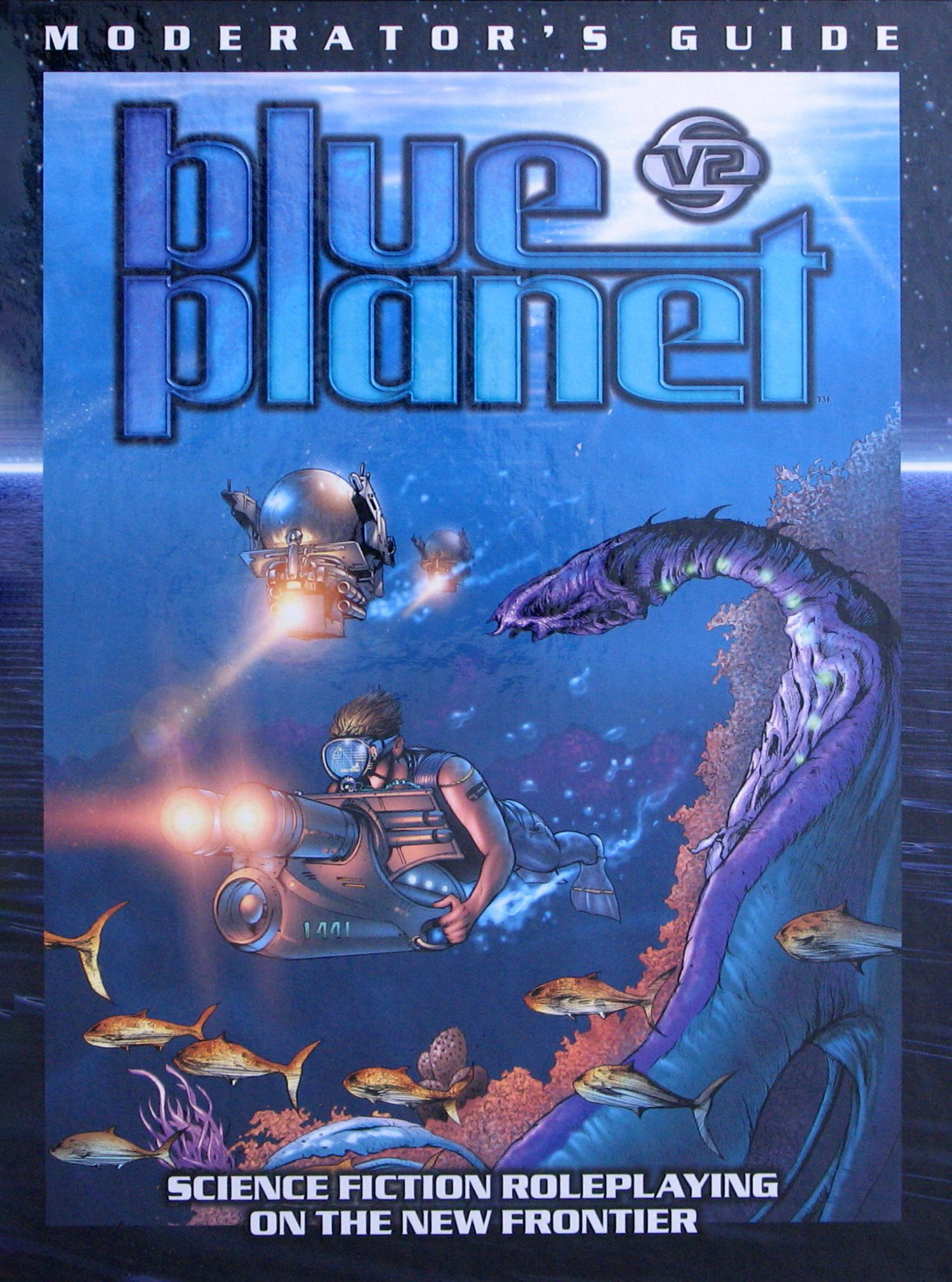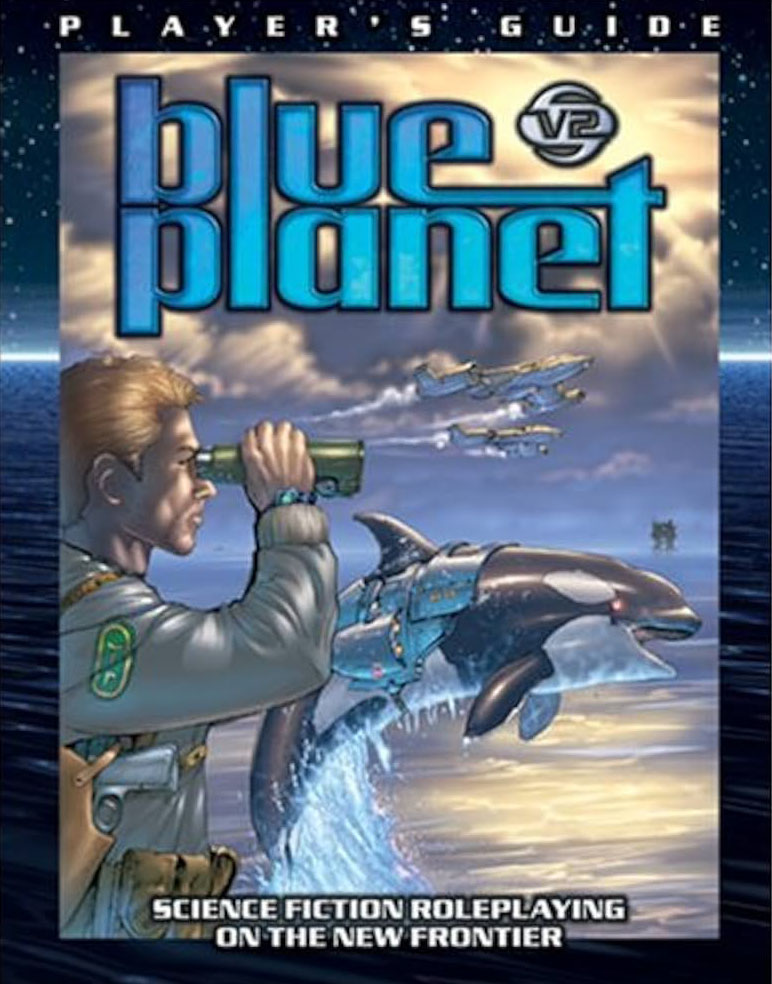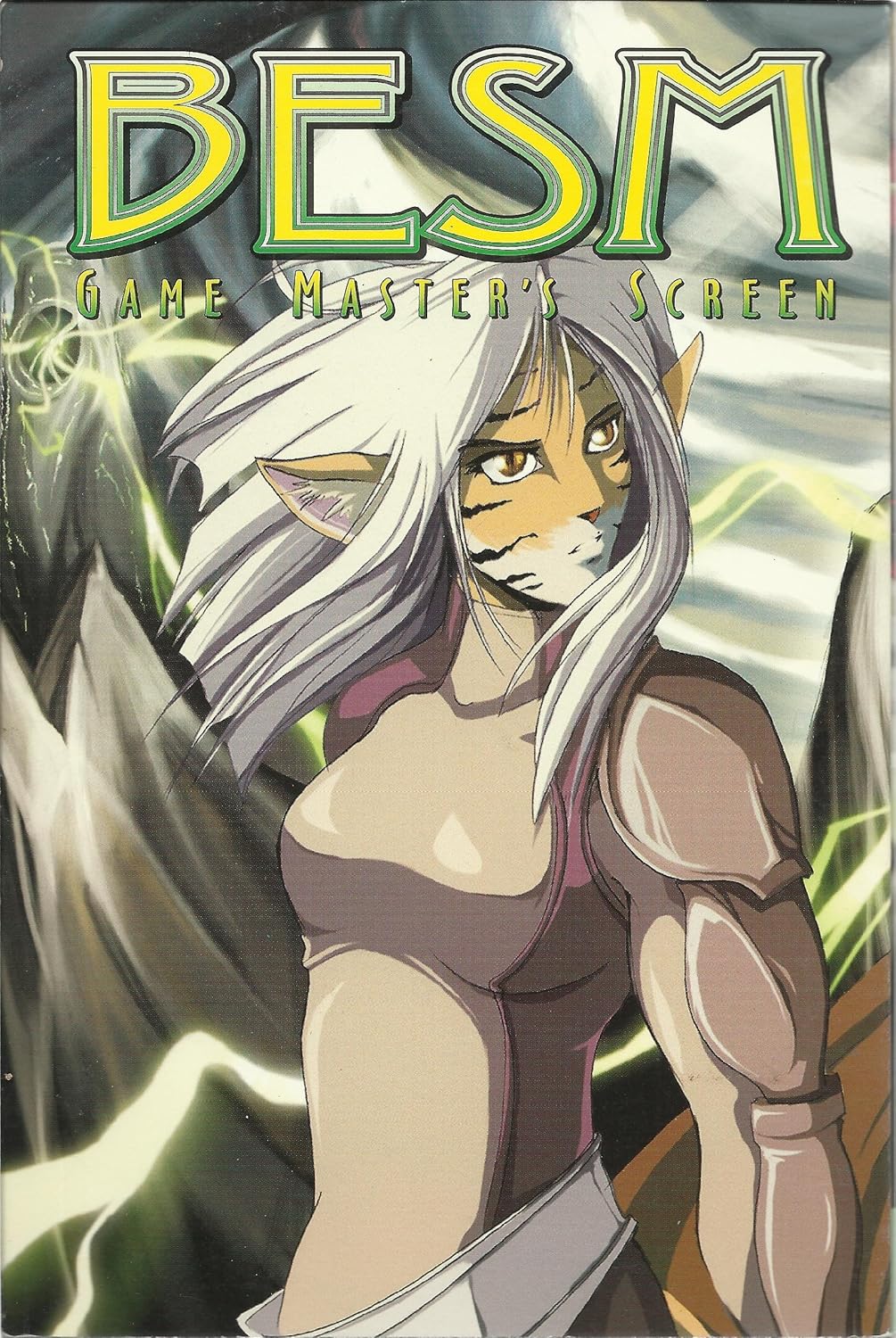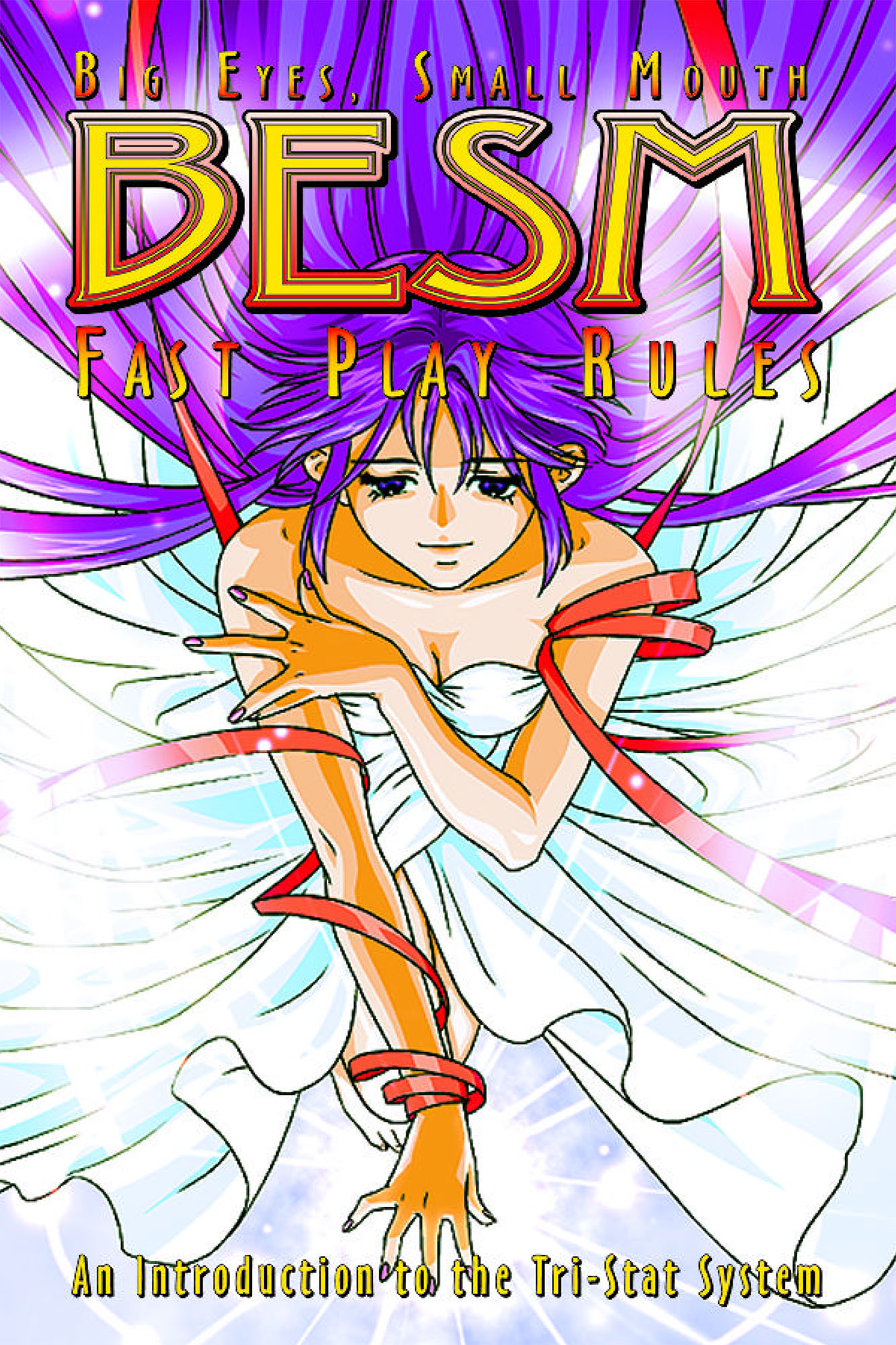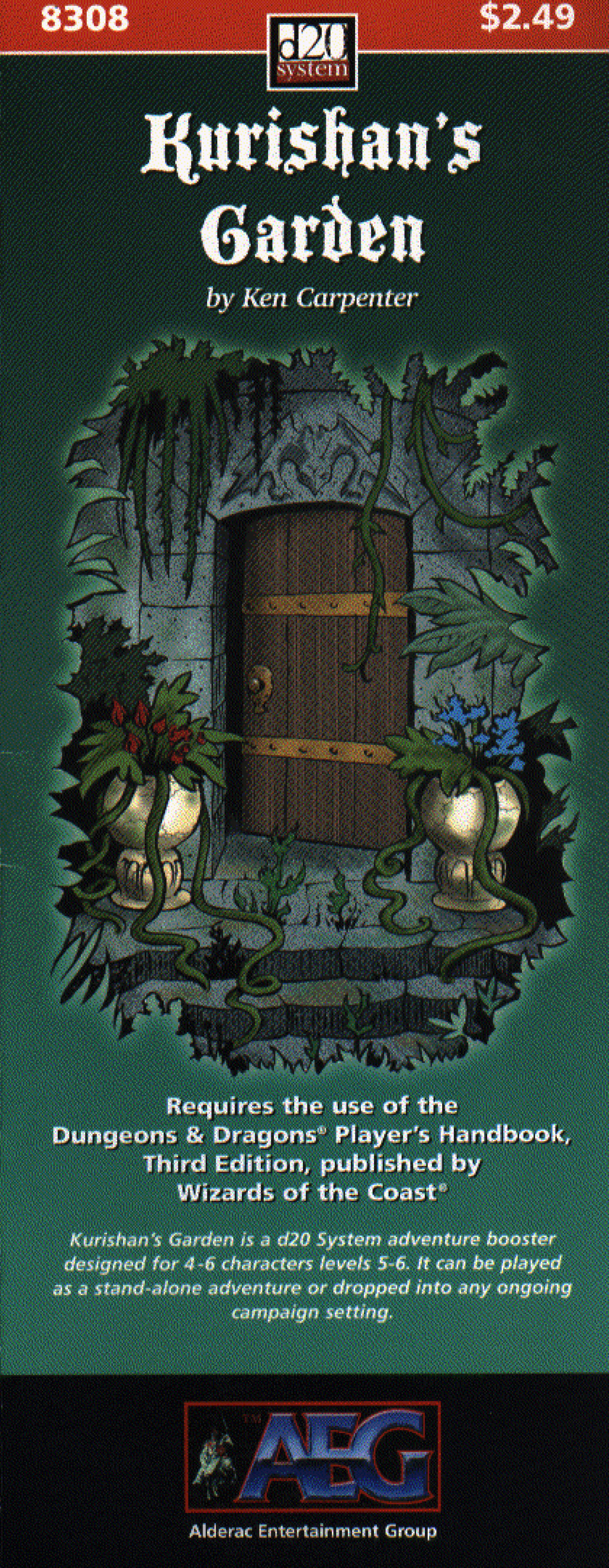The year is 2199. From its scientific foundations and technological detail to a beautifully developed future history, this game never stops delivering on the promises of its rich, evocative setting. Complemented with a robust dice pool system and some innovative character creation mechanics, Blue Planet deserves a place on every gamer’s shelves.
Review Originally Published in Games Unplugged (February 2001)
Republished on RPGNet May 22nd, 2001
The colony world of Poseidon, the titular setting of the Blue Planet Roleplaying Game, is a wondrous place: From the metropolis of Haven to the floating city of Dyfedd to the corporate town of Simushir and beyond, humanity has left its indelible mark upon the planet. But beneath the waves of this ocean world lurk mysteries which are only beginning to come to light – enigmas which may hold the key to mankind understanding the nature of the universe… and themselves.
Unlike many games which have two core rulebooks, the Blue Planet Moderator’s Guide has absolutely no rules content. Instead, its 250 pages are spent detailing Poseidon to an exceptional level of detail.
(The Player’s Guide – which contains the entire Blue Planet rule system – was previously reviewed.)
FUTURE HISTORY
Humanity’s rapid technological progress of the past century continues unabated into the next. (In addition to the technological wonders which await us, the creators have also taken the time to discuss the dead ends which we pursue – small touches like this give the entire background of the game a sense of reality which many SF settings lack.) As always, the political landscape changes – sometimes for the better, sometimes for the worse. Then, in 2075, an astonishing discovery is made: While studying the Oort Cloud, astronomers discover a wormhole beyond the orbit of Pluto. Although it takes more than a year for scientists to realize what they’ve found, and another three before they confirm their suspicions, a new era of humanity is opened up: On the other side of the wormhole is Poseidon: an earth-like planet. A colonization mission is sent, and plans are made to follow up with regular resupply missions.
But then mankind’s technological pace meets with disaster: In 2090, a genetically engineered parasitic fungus designed to attack rice crops begins to rapidly mutate – spreading to the rice itself and, then, to wheat crops. As the so-called Fischer Virus spreads around the globe, famine is inevitable. This disaster, which lasts until 2120, causes massive social and political upheaval: Billions die; the UN is replaced by the GEO (Global Ecology Organization); several multinational corporations become nation-states in their own right; and the colonization effort is abandoned.
And then, finally, in 2165, it’s time for mankind to return to the stars – and, more specifically, Poseidon. They discover, upon their return, that the colonists they left behind – who slowly lost their advanced technology in the interim – have gone native and developed unique cultures of their own. At this point, it seems that a slow development of Poseidon will now be inevitable and natural… until Long John is discovered. Long John, a xenosilicate unique to Poseidon, is discovered to possess the keys to advanced molecular and (more importantly) genetic engineering – perhaps even unlocking, at long last, the secret of immortality. A latter-day gold rush is launched, and Poseidon is transformed, in short order, into a political and economic hotbed of competing interests – commercial, political, and social.
The current year is 2199: Natives fight with Incorporate City-States. Incorporate City-States struggle for independence from the GEO. Earth still struggles to fully recover from the long years of the Blight. And through it all, beneath all of this frontier conflict, lies a mystery beneath the waves…
Poseidon is home to a wide diversity and variety – but it is all fully justified by the setting’s future history. This is a smart game: Every element – from the believable, yet alien ecology to the technological landscape of the future – is fully justified and then used to its utmost. The detail of the book provides not only a depth, but also a clarity of understanding, to a rich and evocative setting – one which is not only fascinating to experience, but which also instantly begins sparking adventure ideas. I’ve often said that details are the key difference between a good idea and a great game world, and Blue Planet proves that maxim true.
It is ironic that this rich detail is also directly afflicted (one might say blighted) by the only serious flaw in the entire package: The table of contents – which lists only the four chapter headings for the entire book – is woefully inadequate for a book of this scope and depth.
But small glitches like that are scarce on the ground when it comes to Blue Planet, and its clear that – when it comes to rich, rewarding science fiction settings – you will be hard pressed to find one better.
Grade: A-
Writers: Jeffrey Barber, Greg Benage, Allan Grohe, John Snead, Jason Werner
Publisher: Biohazard Games (Fantasy Flight Games)
Price: $27.95
Page Count: 255
ISBN: 1-887911-05-4
Product Code: BP01
Read my review of the Blue Planet Player’s Guide!
For an explanation of where these reviews came from and why you can no longer find them at RPGNet, click here.

